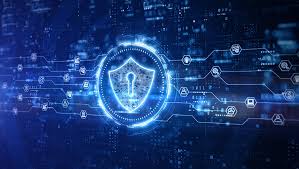As remote work becomes a permanent fixture in many organizations, ensuring the security of digital assets has never been more critical. With employees accessing company resources from various locations, the risk of cyber threats increases significantly. Implementing robust cyber security best practices is essential to protect sensitive information and maintain business continuity. This article outlines key practices for enhancing cyber security in remote work environments.
The Importance of Cyber Security for Remote Workers
Remote work has transformed the traditional workplace, providing flexibility and increasing productivity. However, it also presents unique challenges:
- Increased Attack Surface: Employees use personal devices and unsecured networks, creating more entry points for cybercriminals.
- Phishing Attacks: Remote workers may be more susceptible to phishing attempts, as they often operate outside the security protocols of the office.
- Data Protection Concerns: Sensitive company data can be compromised if proper security measures are not in place.
Understanding these challenges is the first step in implementing effective cyber security measures.
1. Implement Strong Password Policies
Enforce Password Complexity
Passwords are the first line of defense against unauthorized access. Organizations should enforce strong password policies that require:
- Minimum length: At least 12-16 characters.
- Complexity: A mix of uppercase and lowercase letters, numbers, and special characters.
- Regular updates: Employees should change passwords every few months.
Encourage Password Managers
To help employees manage complex passwords, consider recommending reputable password managers. These tools can store and generate secure passwords, reducing the likelihood of password reuse and improving overall security.
2. Utilize Multi-Factor Authentication (MFA)
Add an Extra Layer of Security
Multi-Factor Authentication (MFA) provides an additional security layer by requiring users to verify their identity through multiple methods. This typically includes:
- Something you know: A password or PIN.
- Something you have: A smartphone app generating a time-sensitive code or a hardware token.
- Something you are: Biometric verification, such as fingerprint scanning.
Implementing MFA significantly reduces the risk of unauthorized access, even if passwords are compromised.
3. Secure Remote Access
Use Virtual Private Networks (VPNs)
To protect sensitive data transmitted over the internet, organizations should implement VPNs. A VPN encrypts data, making it difficult for attackers to intercept information while employees are working remotely.
Set Up Secure Connections
In addition to VPNs, ensure that employees use secure connections, particularly when accessing company resources from public Wi-Fi networks. Encourage the use of mobile hotspots or secured private networks whenever possible.
4. Educate Employees on Cyber Security Awareness
Conduct Regular Training Sessions
Cyber security training is vital in empowering employees to recognize and respond to threats. Training should cover:
- Phishing detection: How to identify suspicious emails and links.
- Social engineering tactics: Understanding how attackers manipulate individuals to gain information.
- Safe browsing practices: Guidelines for securely navigating the internet.
Foster a Culture of Security
Create an environment where employees feel comfortable reporting suspicious activities or potential threats. Regularly remind them of the importance of cyber security and encourage vigilance.
5. Implement Device Security Measures
Require Endpoint Security Solutions
All devices used for remote work, including personal devices, should have endpoint security solutions installed. These solutions typically include:
- Antivirus software: To detect and eliminate malware.
- Firewalls: To protect against unauthorized access.
- Encryption tools: To secure sensitive data on devices.
Keep Software Updated
Ensure that all software, including operating systems and applications, is kept up to date with the latest security patches. Regular updates help protect against known vulnerabilities that cybercriminals might exploit.
6. Develop an Incident Response Plan
Prepare for Potential Breaches
Despite best efforts, breaches may still occur. An effective incident response plan outlines the steps to take when a security incident arises. Key components of the plan should include:
- Identification of the incident: How to recognize a breach or cyber attack.
- Containment strategies: Immediate actions to limit the damage.
- Communication protocols: Guidelines for informing stakeholders, including employees and clients.
Conduct Drills and Simulations
Regularly testing the incident response plan through drills and simulations can ensure that all employees know their roles in the event of a cyber incident. This preparedness can significantly mitigate damage during a real breach.
7. Monitor and Audit Access to Data
Track User Activity
Monitoring user activity and access to sensitive data can help identify unusual behavior that may indicate a security threat. Implement logging and monitoring tools to track who accesses what data and when.
Regular Audits
Conducting regular audits of access rights and data usage helps ensure that only authorized personnel can access sensitive information. This practice also assists in identifying any potential security weaknesses that need to be addressed.
8. Seek Cyber Security Advisory Services
Leverage Expertise
For organizations lacking the internal resources to implement robust cyber security measures, seeking assistance from a cyber security advisory firm can be invaluable. These experts can provide guidance on best practices, assist with risk assessments, and develop customized security strategies tailored to your specific needs.
Continuous Improvement
Cyber security is an ongoing process that requires constant adaptation to new threats. Engaging with cyber security advisors can help your organization stay ahead of emerging risks and ensure that your remote workforce is protected.
Conclusion
As remote work continues to shape the business landscape, implementing effective cyber security measures is essential for protecting sensitive data and maintaining operational integrity. By following these best practices—such as enforcing strong password policies, utilizing multi-factor authentication, and fostering a culture of security—organizations can significantly reduce their vulnerability to cyber threats.
Investing in cyber security not only safeguards your digital assets but also enhances trust among employees and clients alike. With the right strategies in place, your remote workforce can operate securely and efficiently in an increasingly complex digital environment.




